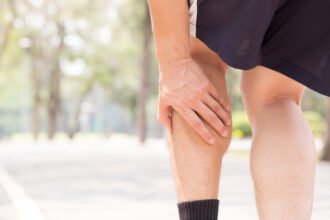The most common reason for a spine fusion is to relieve back pain caused by motion of the vertebrae. Elimination of the motion is intended to also eliminate the source of the pain. Abnormal, painful motion might be caused by DDD, abnormal slippage as in spondylolisthesis or spondylolysis, or other conditions such as facet joint degeneration. The orthopedic surgeon may also perform a spine fusion due to other conditions that can cause spinal instability, including infection, spine tumors, other fractures of the spine and deformities such as scoliosis.
The most common reason for a spine fusion is to relieve back pain caused by motion of the vertebrae. Elimination of the motion is intended to also eliminate the source of the pain. Abnormal, painful motion might be caused by DDD, abnormal slippage as in spondylolisthesis or spondylolysis, or other conditions such as facet joint degeneration. The orthopedic surgeon may also perform a spine fusion due to other conditions that can cause spinal instability, including infection, spine tumors, other fractures of the spine and deformities such as scoliosis.
Internal fixation of the spine is accomplished using metallic screws and rods or plates, or interbody cages. Fixation immobilizes the spine, giving the bone graft time to grow into a bridge across the two vertebrae. The degree of immobilization by internal fixation will not increase or decrease when the bone graft matures and heals across the two vertebrae. However, if the fusion does not occur—a term called pseudoarthrosis—then over time the implants will loosen, break or pull out of the bone. This occurs despite the high strength of the metallic constructs that are being used today.
There is a variety of posterior motion preservation devices in various stages of development, clinical investigation and marketing. The intent of these devices is to provide a treatment alternative to spine fusion. These devices and procedures include total disc replacement and disc nucleus replacement. However, TDR may not relieve the patient’s pain if the pain does not involve the disc. Pain may be due to the presence of other conditions, such as spinal stenosis or facet disease. Patients with such conditions may be candidates for posterior motion preservation devices. These devices include interspinous process spacers, posterior dynamic stabilization devices and facet replacement devices for treating spinal stenosis.
Spinal fusion technologies — like virtually every other medical product — is under pricing pressure, but since demand for solutions to back pain and more serious spine-related conditions continues to remain high, the global market for spine fusion continues to grow at respectable rates, eclipsed only by novel spine device technologies like artificial discs.
Below is illustrated the unit sales volume and average selling price, from 2010 to 2020, for pedicle screw fusion systems.
Source: MedMarket Diligence, LLC; Report #M520, “Worldwide Spine Surgery: Products, Technologies, Markets and Opportunities 2010-2020.”









